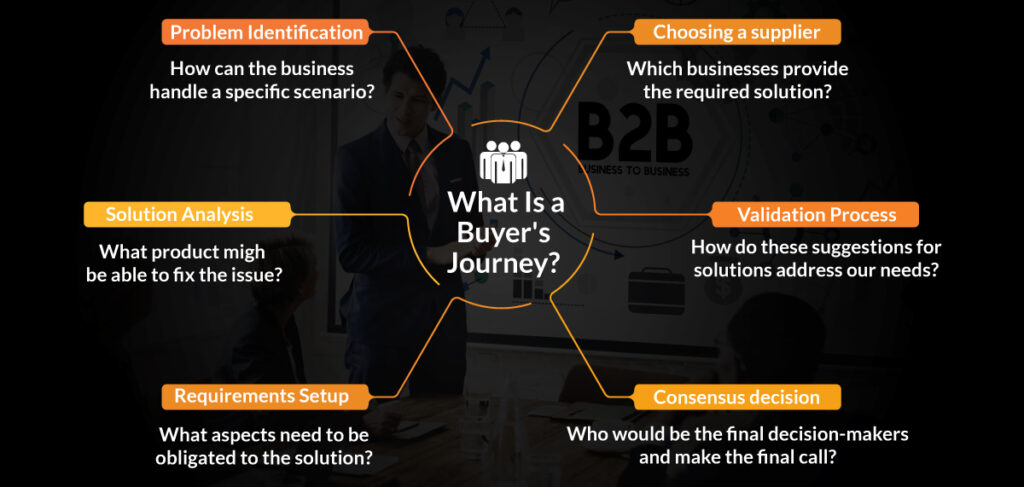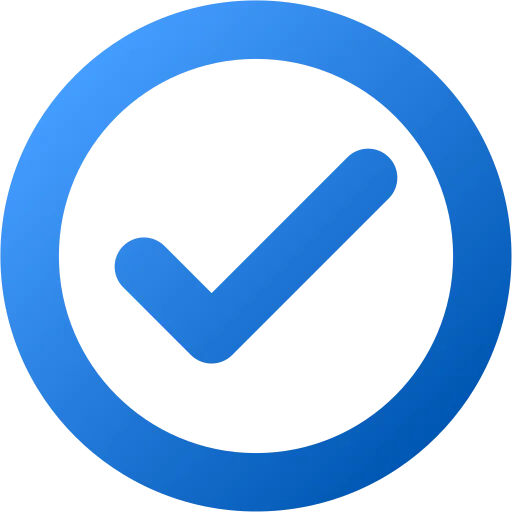
Over the past few years, there has been a significant transformation in the B2B buyer’s journey. Today’s decision-makers have access to an enormous quantity of information, which has led to a more independent research process. As a result, marketing and sales representatives have less opportunities to interact with prospects.
Only 17% of the buyer’s cycle for B2B buyers involves meetings with solution providers, according to a Gartner analysis. In addition, Gartner projects that by 2025, 80% of B2B sales contacts would only occur through digital channels, since millennials favor a sales process that is free of sellers.
However, the “vendor-free” aspect is really a fantasy. The goal of inbound marketing methods is to persuade potential customers that they are making the right decisions. When prospective customers are certain of what they want, outbound actions step forward to deliver them with additional tools that confirm those decisions.
In other words, prospects are free to roam while businesses leave a tray of delights for them to follow in the current condition of the B2B buyer’s journey funnel. Selling is still going on, although there is less pressure from potential purchasers. Let’s examine the buyer’s journey notion in more detail and how your brand can use it to close more purchases.
Must Read: Driving Growth with B2B Purchase Intent Data: Unlocking the Power of Buyer Insights
What Is a Buyer’s Journey?
Table of Contents
The active research process a potential customer undertakes each time a recognized need necessitates the acquisition of a solution is known as the buyer’s journey. B2B marketers and sales representatives can promote their products as a wise choice for the prospect by being aware of how this experience might be altered.

The steps in the typical B2B purchasing process that lead to a transaction are as follows:
Problem Identification: How can the business handle a specific scenario?
Solution Analysis: What product might be able to fix the issue?
Requirements Setup: What aspects need to be obligated to the solution?
Choosing a supplier: Which businesses provide the required solution?
Validation Process: How do these suggestions for solutions address our needs?
Consensus decision: Who would be the final decision-makers and make the final call?
The marketing and sales teams must, however, come to an understanding regarding the kind of prospect who is most suitable to take that route before paving asphalt for the B2B buyer’s journey road.
Each lead generation effort must start with the development of buyer personas and ideal customer profiles (ICPs). Finding the person who is actually in charge of the B2B decision-making process must still be taken into account before moving on to the next stage of prospect development.
Must Read: 35 Closed-Ended Questions To Ignite Your Sales Strategy – And When to Use Them
Aspects of the B2B Buyer’s Journey
Forbes claims that a typical enterprise buying group comprises of six to ten decision-makers who are each given at least four pieces of information to support the suitability of the solution they have selected.
But many B2B prospecting strategies fail frequently because advertisers and vendors mistakenly believe that targeting C-level executives will increase conversion rates. They manage the budget that will finance the selected course of action, correct? Yes, but not quite.
The buying process is somewhat influenced by a variety of persons. Each of these are capable of carrying out one or more of the ensuing buying tasks:
- Users
Individual contributors will be responsible for implementing the solution to meet the defined need. Their managers, who will convey their satisfaction (or lack thereof) to the highest levels, will benefit the most from their insights.
- Initiators
Team leaders or directors typically see a problem that needs to be fixed or perceive an opportunity to boost performance by adopting a certain tool. They will be the ones to specify the product’s requirements.
- Gatekeepers
These are the individuals in charge of incoming information control. They may be VPs in charge of sifting through all relevant information before making a crucial decision, or they may be assistants to senior executives.
- Decision-influencers
A junior or mid-level manager contributes more to the purchasing process. The decision-influencer, who is typically a member of the user crew, is in charge of conducting the initial study on a product or service. The people who present the evidence that affects the decision-makers’ ultimate choice are the decision-influencers.
- Decision-makers
Although these C-level stakeholders have the last say in whether deals are signed, they are rarely involved in the initial phases of the buyer’s journey, which require research. Their communication routes are frequently clogged, their schedules are frequently overbooked, and inside advisers frequently have more influence over them than outside ones.
Even if buying occupations can serve as a reference to define a particular person’s position, responsibilities might change at any time. Even the individuals performing them have the potential to change their focus or quit entirely, which would require the cycle to restart.
All roles are crucial to the B2B buyer’s journey, but there are major differences in the best times to reach each one, the messages that could pique their interest, and the kinds of information they will consume. For this reason, utilizing all phases of the buyer’s journey is essential to producing more high-quality leads.
Must Read: Tips for Preventing Data Decay in B2B Sales
What Are the Stages of the B2B Buyer’s Journey?
The fact that B2B purchase procedures are non-linear is one of their toughest features. Prior to moving on to the actual purchase step, prospects flit back and forth between the various stages, verifying their initial impressions and weighing a number of choices.
To that end, understanding each step of the buyer’s journey and how to approach it helps sales and marketing teams map out the various points of contact with prospects and prepare their resources and action plans for the subsequent contact touch.
The stages of the B2B buyer’s journey that are the most typical, along with the recommended kinds of content for each:
1. Awareness
The first stage of the buyer’s journey starts when a potential customer acknowledges they have a problem that needs to be fixed. They might discover this by looking at their internal data, or they might come across some external information that makes them aware of a certain problem.
The prospect’s needs and pain points must be clearly understood at this phase if you want to emphasize how your business can help the client meet those needs. The following are the top online articles to use:
- Instructional blog posts
- Whitepapers, manuals, e-books, or checklists
- The use of infographics in social media
- Reliable market reports
- Explanatory Videos
Brands may get closer to the customers who are actively looking for information by educating them on the subjects that stem from the issue or demand.
A video describing the operation of a demand-side platform (DSP) might be helpful to a potential buyer who is seeking for new ways to enhance his ads.
- Consideration
Prospects have previously framed and named their need during the consideration step. In order to better grasp the issue, many people generate files with links to e-books and other educational resources. They will now want to know more about the various available potential solutions.
Prospects are getting set to compile a list of all the companies and goods that might have the necessary qualities in a solution. In order to win over a new customer, a business must demonstrate that its strategies and tactics have previously satisfied a similar demand successfully.
The content examples listed below can help with this goal:
- Product showcase videos
- Webinars – live or recorded
- Case study
- Technical writeups
3. Decision
Prospects are in the last phase of the purchasing process when they are aware of how to meet their wants and which goods or services would be best for them. Here, the main emphasis is on evaluating and testing the gathered suppliers on their list so they may ultimately choose which one will get the opportunity to demonstrate their value.
To demonstrate their distinct value proposition and all the qualities that set their product apart, marketers and vendors who represent a brand should be prepared. Additionally, now is the time to learn what the most harmful incoming objections are and how to respond to each one.
The articles below are the most beneficial for this stage:
- Live demos or free product trials
- Price Comparisons
- Success stories
- Testimonials
Why the B2B Buyer’s Journey Matters
Conventional sales and marketing strategies frequently attempt to complete the transaction at the beginning of the customer’s buying process. The key to a fruitful connection when prospects choose to convert to clients, though, is to nurture and assist them until they feel ready to take the plunge.
Almost all buyer’s journey examples will centre on giving potential customers organized information so that all questions and worries regarding their decision-making process are addressed. Businesses gain from carefully tracking the buyer’s journey for the following reasons:
Encourages Inbound Marketing
The B2B buyer’s cycle informed the messages, content, and overall activities that are all focused on meeting a certain need. Your SEO outreach will benefit from sharing tips on how to handle particular scenarios, emphasizing how your product alleviates a list of pain points, and developing expertise in a field.
Strengthens Efforts That Are Specifically Tailored
For the present B2B development strategies, personalized reach is practically required. Prospects anticipate that the ideas they receive will be tailored to their specific requirements. At every level of the buying process, developing a strong bond with each prospective customer enables both parties to experience a partnership even before a contract is signed.
Ensures Levels of Satisfaction
When the decision to buy is taken, both the provider and the customers are already familiar with how to integrate the solution for quick results. It is almost certain that both parties will reach an acceptable agreement.
Master the B2B Buyer’s Journey to Win More Business
To maximize lead creation within the B2B buyer’s journey, sales and marketing teams must work in tandem. While many vendors want to move as quickly as possible into the outbound phase of the process, honoring the inbound-based stages will fill their pipelines with customers who are ready to make a purchase.
The pace of the entire cycle may be controlled, though, if marketing and sales professionals pool their knowledge of the most crucial turning points and how these were exploited to inspire gratifying, customer-centered replies.
A contract could be lost if the prospect is rushed or delayed excessively. Each action must be carried out at the proper moment, through the correct channel, and with the ideal goal in mind.
Must Read: B2B Sales Dynamics: Leads, Prospects, and Opportunities

Vikas Bhatt is the Co-Founder of ONLY B2B, a premium B2B lead generation company that specializes in helping businesses achieve their growth objectives through targeted marketing & sales campaigns. With 10+ years of experience in the industry, Vikas has a deep understanding of the challenges faced by businesses today and has developed a unique approach to lead generation that has helped clients across a range of industries around the globe. As a thought leader in the B2B marketing community, ONLY B2B specializes in demand generation, content syndication, database services and more.


